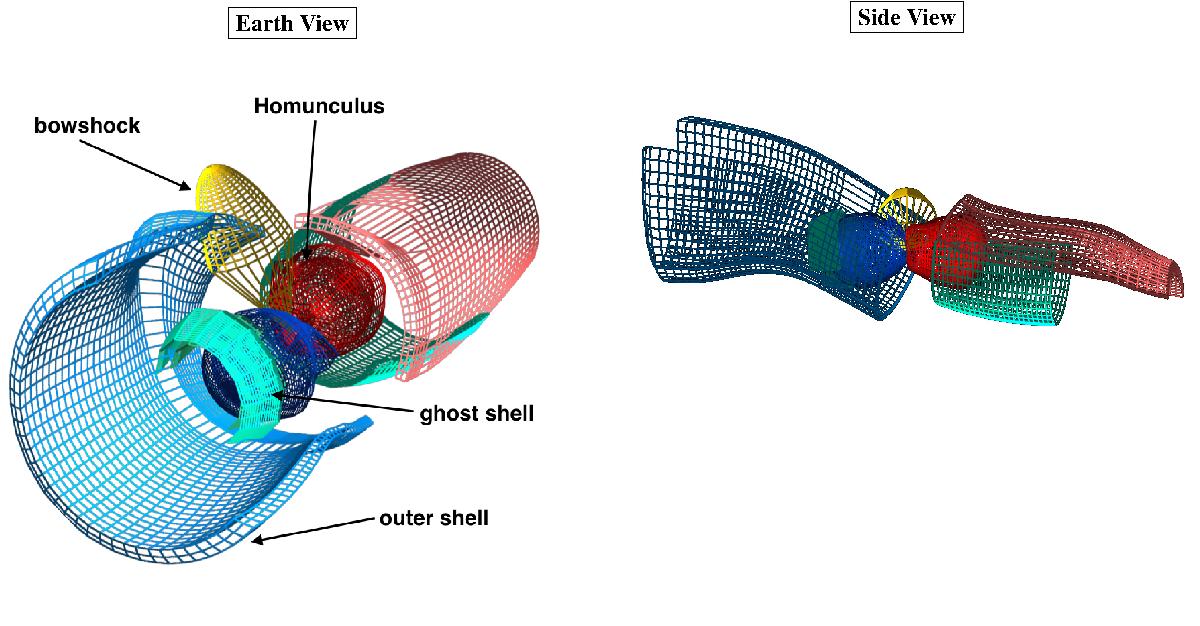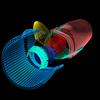Fig. 4

Three-dimensional model of η Car’s outer ejecta seen from Earth (left) and from the side (right) with the bipolar Homunculus nebula in the center (dark red and blue lobes). The model has been constructed with SHAPE and the Hβ emission and velocity (over a range of ± 3000 km s -1) information extracted from the MUSE data. The outer ejecta form a partial bent cylinder. The open cylinder parts are not observed in the MUSE data, i.e., we only trace the bottom of the shell moving toward us and the top of the shell moving away from us. The open cylinder parts are likely too faint, perhaps due to only weak interactions with less dense surrounding material. This large tube is probably bent or indented due to material being slowed down by interactions with the environment. The ghost shell (green) is in our line of sight to the southern Homunculus lobe and consists of two closely aligned shells. An additional half-shell (green mesh, complementing the bottom of the large cylindrical shell moving away from us) lies behind the northern Homunculus lobe. The bowshock-like feature is displayed in yellow. The colors are selected to distinguish the different shapes selected for the SHAPE modeling.
Current usage metrics show cumulative count of Article Views (full-text article views including HTML views, PDF and ePub downloads, according to the available data) and Abstracts Views on Vision4Press platform.
Data correspond to usage on the plateform after 2015. The current usage metrics is available 48-96 hours after online publication and is updated daily on week days.
Initial download of the metrics may take a while.




